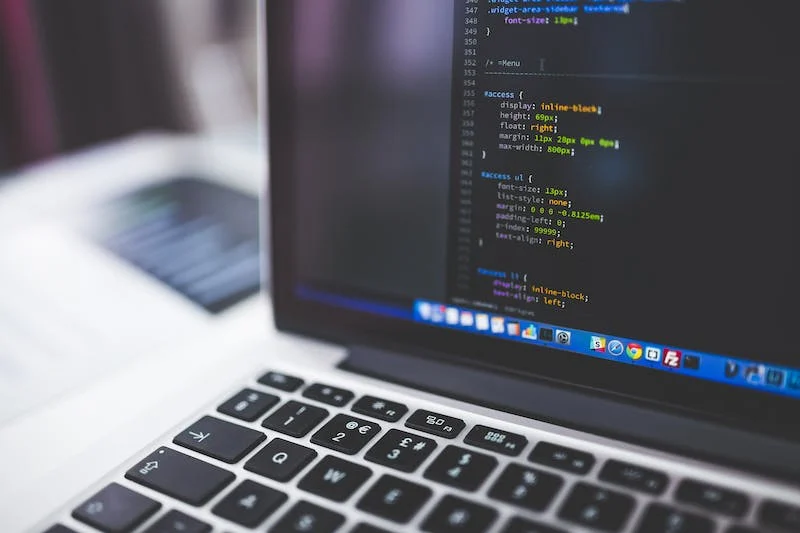Contents
- 1. The Metaverse Matures: From Hype to Enterprise
- 2. Digital Twins: The Beating Heart of the Industrial Metaverse
- 3. From Factories to Cities: Real-World Applications of Digital Twins
- 4. The Rise of Virtual and Hybrid Collaboration Spaces
- 5. The Virtual Commerce Boom
- 6. Digital Twins Meet AI: Simulation Intelligence
- 7. Hybrid Events and Virtual Engagement
- 8. Challenges: Data, Privacy, and Interoperability
- 9. Sustainability in the Virtual Era
- 10. The Economic Impact: A New Digital Industrial Revolution
- 11. The Human Factor: Reimagining Work and Creativity
- 12. The Future: A Convergence of Realities
- Conclusion: Building the Mirror World
Meta Description:
Explore how the Metaverse, Digital Twins, and Virtual & Hybrid Spaces are revolutionizing industries — from immersive commerce and remote collaboration to AI-driven simulation and digital operations.
Technology and Innovation Correspondent
In 2025, the boundaries between the physical and digital worlds are fading faster than ever.
Factories run simulations of themselves in the cloud before producing a single component. Retailers build immersive virtual showrooms. Conferences take place simultaneously across continents — with attendees both on-site and in the metaverse.
This convergence of Metaverse technologies, Digital Twins, and Virtual & Hybrid Spaces marks one of the most transformative chapters in the digital revolution since the birth of the internet.
What began as science fiction is now a strategic business reality — one that’s reshaping industries from manufacturing to healthcare, commerce to education.
“We’re moving from digital transformation to digital replication,” says Dr. Helena Koenig, Head of Emerging Technologies at Industry4o.com. “Enterprises aren’t just adopting technology; they’re mirroring the world itself.”
1. The Metaverse Matures: From Hype to Enterprise
The term metaverse first captured public imagination in the early 2020s — fueled by virtual reality headsets, blockchain economies, and bold claims from tech giants.
Initially dismissed as a passing fad, the concept is now evolving into something far more practical and enduring: a network of interconnected 3D and immersive environments for work, design, learning, and commerce.
According to Gartner, by 2028, 20% of large organizations will use shared, persistent virtual spaces for customer engagement, digital operations, or product innovation.
Platforms like NVIDIA Omniverse, Microsoft Mesh, and Unity Industry are now powering enterprise-grade virtual environments — blending simulation, collaboration, and data visualization.
“The metaverse isn’t about escapism; it’s about efficiency,” says Koenig. “It’s becoming a business tool — a visualization layer for the data-driven world.”
Companies like Siemens, BMW, and Accenture are among the early adopters, using metaverse technologies for factory design, virtual training, and cross-border project collaboration.
2. Digital Twins: The Beating Heart of the Industrial Metaverse
At the core of this new digital paradigm is the Digital Twin — a virtual replica of a physical object, process, or system that mirrors real-time data from sensors and IoT devices.
Digital twins enable engineers and operators to simulate, test, and optimize operations without physical risk or downtime.
“Digital twins are the bridge between the physical and digital worlds,” explains Dr. Victor Anders, Chief Technology Officer at Dassault Systèmes. “They let us understand reality in high definition.”
How Digital Twins Work
- Data Capture: Sensors and IoT devices feed real-time data into digital models.
- Simulation: Advanced software replicates the behavior of systems under varying conditions.
- Optimization: AI analyzes outcomes to improve performance, predict failures, and reduce costs.
These models aren’t static; they evolve as the physical world changes — forming a continuous feedback loop.
3. From Factories to Cities: Real-World Applications of Digital Twins
What began in manufacturing has expanded to nearly every sector.
🔧 Manufacturing and Industry 4.0
- Siemens uses digital twins to simulate entire factories, optimizing layout, energy consumption, and supply chains before construction.
- General Electric (GE) employs twin models for turbine maintenance, predicting faults and extending equipment lifespan.
- NVIDIA Omniverse allows collaborative engineering, where teams around the world interact with 3D models in real time.
🚗 Automotive and Mobility
- BMW’s “Factory of the Future” leverages a full digital twin of its Regensburg plant — allowing planners to test logistics, robotics, and safety systems virtually.
- Tesla uses digital twins to collect sensor data from every car, updating performance and maintenance recommendations via software.
🏙️ Smart Cities and Infrastructure
Urban planners use city-scale twins to simulate traffic, energy grids, and environmental impact.
Singapore’s Virtual Singapore and Helsinki’s 3D twin allow city authorities to model urban growth and disaster response.
“Digital twins are the blueprint of the future,” says Anders. “We’re creating data-driven cities that think and respond like living organisms.”
4. The Rise of Virtual and Hybrid Collaboration Spaces
The COVID-19 pandemic reshaped how the world works, making remote and hybrid collaboration a lasting norm.
Today, businesses are moving beyond simple video calls to immersive 3D collaboration platforms that replicate the nuances of in-person interaction.
Platforms like Spatial, Virbela, and Meta Horizon Workrooms offer shared virtual offices where teams interact as avatars, annotate 3D models, and host global events.
“Hybrid work 2.0 isn’t about Zoom fatigue — it’s about immersive presence,” says Kate Johnson, Head of Collaboration Solutions at Microsoft Mesh. “Virtual spaces are becoming integral to corporate culture.”
In industries like architecture, design, and healthcare, immersive spaces enable real-time 3D visualization and collaboration that 2D screens simply can’t match.
A surgeon in Tokyo can practice on a virtual twin of a patient’s organ before the actual operation, while an architect in Paris can co-design with a client in Dubai inside a shared digital environment.
5. The Virtual Commerce Boom
Commerce is also finding its footing in the virtual world.
Retailers and brands are embracing metaverse commerce (or v-commerce) — virtual shopping experiences that combine the convenience of e-commerce with the engagement of physical retail.
Examples:
- Nike’s Nikeland on Roblox attracted over 30 million visitors, offering digital wearables that can be mirrored in the physical world.
- IKEA’s Studio App lets users design rooms in AR and purchase products instantly.
- Gucci and Balenciaga have opened immersive showrooms where customers can explore digital collections.
According to McKinsey’s 2025 Metaverse Economy Report, global spending in virtual goods, experiences, and services is expected to exceed $800 billion by 2030.
“The metaverse is not replacing e-commerce; it’s extending it,” says Johnson. “It’s about emotion, connection, and interaction — not just transaction.”
For businesses, these experiences also unlock valuable behavioral data — revealing how customers explore, engage, and make decisions in immersive environments.
6. Digital Twins Meet AI: Simulation Intelligence
Digital twins are becoming even more powerful when integrated with artificial intelligence.
AI-driven twins can self-calibrate, predict outcomes, and even simulate future scenarios autonomously.
This convergence — sometimes called “simulation intelligence” — is transforming sectors that depend on complex systems.
Applications:
- Energy: AI twins optimize renewable power grids by simulating weather patterns and energy flow.
- Aviation: Airbus uses AI-driven twins to simulate aircraft maintenance and flight efficiency.
- Healthcare: Hospitals are developing patient-specific digital twins for personalized treatment plans.
“AI is giving digital twins a mind of their own,” says Anders. “We’re entering an era where systems learn and adapt in real time — before anything goes wrong.”
This proactive intelligence allows businesses to anticipate, not just react — driving efficiency, sustainability, and resilience.
7. Hybrid Events and Virtual Engagement
The events industry has also undergone a digital metamorphosis.
Hybrid events — blending physical attendance with virtual participation — are now standard across corporate, cultural, and educational sectors.
Platforms like Hopin, VFairs, and EventXR enable attendees to experience conferences, trade shows, and exhibitions from anywhere — complete with networking lounges, breakout rooms, and live chat.
In 2024, CES Las Vegas reported record engagement after introducing a metaverse component, allowing remote visitors to explore 3D booths via VR.
“Hybrid events have democratized participation,” notes Koenig. “They’re inclusive, sustainable, and scalable.”
The result?
Lower carbon footprints, broader audiences, and richer analytics for organizers and brands alike.
8. Challenges: Data, Privacy, and Interoperability
Despite rapid progress, the path to a unified digital-physical reality is far from smooth.
Key Challenges:
- Data Overload: Digital twins generate massive data streams that require robust cloud infrastructure and real-time analytics.
- Privacy and Security: Immersive environments can capture sensitive biometric and behavioral data, raising new ethical questions.
- Interoperability: Many metaverse platforms remain siloed, preventing seamless movement of assets and identities between ecosystems.
Organizations like the Metaverse Standards Forum and OpenXR Alliance are working toward common frameworks for interoperability and data governance.
“We need open standards to make the metaverse more like the internet — borderless and interoperable,” says Koenig. “Otherwise, we’ll build digital islands, not a connected world.”
9. Sustainability in the Virtual Era
Interestingly, digital twins and virtual operations also offer a pathway toward sustainability.
By reducing the need for physical prototypes, travel, and energy-intensive operations, these technologies can dramatically cut emissions.
- Virtual training reduces travel-related carbon footprints.
- Digital prototyping cuts material waste in manufacturing.
- Smart city twins help optimize traffic, lighting, and energy systems.
A report by Accenture suggests that widespread adoption of digital twin technology could reduce global carbon emissions by up to 7% by 2030.
“Virtualization is the new sustainability,” says Anders. “The greener choice is often the digital one.”
10. The Economic Impact: A New Digital Industrial Revolution
The economic implications are staggering.
According to PwC, the combined market for digital twins and metaverse platforms could reach $1.5 trillion by 2030 — driven by adoption across manufacturing, retail, real estate, and healthcare.
This momentum signals the rise of what experts are calling the “Industrial Metaverse” — a digital layer that mirrors, monitors, and optimizes the real world in real time.
“It’s Industry 4.0 meeting the metaverse,” says Koenig. “A convergence of automation, AI, and spatial computing that redefines productivity.”
Countries like Singapore, South Korea, and the UAE are investing billions in national digital twin infrastructure — viewing it as essential to economic competitiveness and digital sovereignty.
11. The Human Factor: Reimagining Work and Creativity
Beyond economics, the metaverse and digital twins are reshaping human interaction and creativity.
Designers can co-create in 3D environments, educators can host immersive classrooms, and artists can build virtual experiences that blend art, science, and community.
Hybrid spaces also foster inclusivity — enabling participation for people with mobility or geographic barriers.
“The metaverse is the next frontier of human experience,” says Johnson. “It’s not just technology; it’s a new language for creativity.”
Yet, experts caution against over-hype.
The metaverse’s success depends on accessibility, ethical design, and meaningful applications — not just virtual spectacle.
12. The Future: A Convergence of Realities
Looking ahead, the lines between digital and physical will continue to blur — powered by 5G, spatial computing, and generative AI.
- Digital twins will become standard for every asset and system — from cars to cities.
- Virtual spaces will evolve into persistent environments for work, commerce, and governance.
- Mixed reality devices, such as Apple Vision Pro and Meta Quest 3, will bring immersive computing into everyday life.
“The future is not about escaping reality,” says Koenig. “It’s about augmenting it — blending data, design, and human imagination to make the real world work better.”
Conclusion: Building the Mirror World
The Metaverse, Digital Twins, and Virtual & Hybrid Spaces are not isolated technologies — they’re threads of a larger fabric weaving together the next phase of digital civilization.
From industrial simulation to immersive collaboration and virtual commerce, the emerging “mirror world” represents more than technological progress — it’s a new way of understanding and interacting with reality itself.
In this era, the most successful organizations will be those that see the digital world not as a separate domain, but as an extension of their physical one — alive, responsive, and intelligent.
“Reality,” as Koenig concludes, “is no longer limited by physics — it’s limited only by imagination.”
🔗 Sources & Further Reading
- Industry4o.com – Digital Transformation and Metaverse in Industry
- NVIDIA Omniverse – Industrial Metaverse Platform
- Microsoft Mesh – Virtual Collaboration for Hybrid Work
See related coverage: The Future of Money: How Financial Innovation and Decentralized Finance Are Rewriting the Global Economy



